|
no. 3 july - september 2006
Touraine Reform Basis of Todayís Carmelite Culture After the Carmelite reform of St. Teresa in Spain, a similar reform, commonly called the Touraine Reform, occurred in France. Although its impact upon the Order was of equal importance to the Spanish reform, it remains relatively unknown. Yet much of our spirituality and many of our customs today can be traced to that 17 th century French reform. The Orderís Constitutions from 1904 and 1930 show repeated influences from Touraine.
Emanuele Boaga, a historian of the Order, explained that the origins of the reform go back to a group of French Carmelites whose leaders were Behourt, Thibault and later Charpentier who petitioned and obtained permission from the then Prior General to begin an "observant" style of life centered in the convent of Rennes. The community in Rennes renewed their vows according to the new reform in 1608. Romero de Lima Gouvea, a member of the French Delegation, and Sanny Bruijns, from the Dutch Province, then traced the physiognomy of the reform. Fr. Romero is a scholar specialising in the mysticism of John of St. Samson. He spoke on the method of aspirative prayer of John of St. Samson. Sanny spoke of the Marian doctrine of the tertiary Marie Petyt and of her spiritual father, Michael of St. Agustine, author of the famous Vita mariaforme which exerted great influence on the spirituality of Louis Grignion de Montfort.
According to Emanuele Boaga, the importance of the Touraine Reform lies in the fact that, just when the Order was dying in the 1800ís because of the suppression, the spirit of the Reform survived by becoming part of the law of the Order and, thus, unlike other reforms before it, succeeded in a unique manner to "reform" the whole of Carmel. Romero de Lima Gouvea, O. Carm, a member of the French Delegation,was one of several experts participating in the on-going formation course on the Reform of Touraine. Participants in the on-going formation course visit St. Peter's Basilica in the Vatican Following the tradition of the Order to create music reflecting its particular spirituality and piety, Fr. Luccio Zappatore, a member of the Italian Province, composed a song to commemorate the 150th Anniversary of the Madonna del Carmine in Bagnara, Calabria. Entitled Gloria del Libano (Glory of Lebanon), the text of the refrain is based on the passage from Isaiah 35:2 which is one of the oldest Carmelite antiphons. The verses focus on three themes in Carmelite spirituality and found in Pope John Paul IIís letter to the Carmelite Family on the occasion of the 750th anniversary of the Scapular. The first verse is the gesture of Mary as she gives the scapular is the continuation of her gesture of love as she wrapped the newborn Jesus in cloth. The second verse is about Mary, while at the foot of the cross, becoming the mother of all people. The third verse recalled the ascent of the mountain, which is a figure for Jesus, guided by Mary. This theme is based on the Collect for the Mass for the Feast of Our Lady of Mount Carmel. The song can be heard on the internet at: www.mariareginamundi.191.it/gloria del libano.htm
A working group on the topic of "The Arts: Imaging and Expressing a New Song" was established during the International Congress on Consecrated Life in Rome, Italy. Many people stopped by the miniscule work room to tell us that they really wanted to be part of our working group, but there were "just more important topics." It was obvious that some people understood the arts to be more of an activity done after real ministry was finished. It became clear to us that one of the challenges for future understanding is that the arts are a ministry, critical and collaborative to other efforts like peace-making, inculturation, and even community building. We were a small voice at the Congress. We were the small voice that called for the songs that must be sung, the liturgy that must be offered with grace and beauty, the paintings, the weavings, the sculptures, and the stained glass that must be created, and the new language that must be fashioned for the future of consecrated life in our Church and its ministry in our world. In its many and diverse forms, consecrated life is most basically about lives committed to the exploration of God. Beauty is a revelation of God. Godís very self is encountered within the harmony and simplicity of beauty. In our world that is so scarred by violence, abuse, and marginalization, beauty and art are icons of hope for all people. The "crisis of beauty" in our world calls for new language and a new reverence for artists who can speak, imagine, and image a new vision of our world. It is our artists who are the deepest appreciators of cultures and can be the main inculturators of the Gospel in cultures other than their own. It is essential to cultivate the arts within communities of consecrated life and to reverence the artistic gifts of our members. The cultivation of the arts and artists is an antidote to the violence and evil in our worlds and is an integral part of action for justice. It is the artists among us who will see and speak the new and the prophetic. When words of negotiation fail, sometimes the mutual appreciation of something that is beautiful, a story that is told, a song that is shared, will lead beyond the stalemate.
Artists help to create the beautiful spaces in communities of consecrated life where God is encountered. This is one of the great treasures of the Catholic Christian tradition: spaces of prayer are adorned with sacramental signs of Godís presence and love. Artists help us to celebrate liturgy and the liturgical year with the symbols of our traditions seen with new eyes and spoken with new words, as God becomes incarnated in each time and each culture. And artists help to tell the sacred stories of our tradition to the heart and souls of new peoples and new cultures who listen to us, as we listen to them.
In our concern to make consecrated life a viable experience for the future of our Church, may we always remember those artists in our midst who help us to imagine and fashion the future of our communities and their relevance to the world. Adapted from an article by: Stephen Glodek, SM Provincial, Marianist Province of the United States 1) Stain glass window dedicated to St. Albert of Jerusalem in St. John of the Cross Parish, Missasauga, Canada; 2) Madonna and Child with Stories of the Life of St. Anne painted by Carmelite Fra. Filippo Lippi in 1452; 3) Drawing by Marc Chagall of King David. |
|||
|
RETURN TO THE INDEX FOR 2006 | RETURN TO THE INDEX FOR THIS ISSUE INDEX OF CARMELITE
WEBSITES |

 The International Commission of Formation sponsored a course on the
Touraine Reform for the whole Carmelite Family at the Domus Carmelitana on
January 23 Ė February 5, 2006. Participants came from Europe, North and
South America, and Africa. The course began with a general introduction to
the society, church and Order of the time followed by treatments of the
central themes of the reform.
The International Commission of Formation sponsored a course on the
Touraine Reform for the whole Carmelite Family at the Domus Carmelitana on
January 23 Ė February 5, 2006. Participants came from Europe, North and
South America, and Africa. The course began with a general introduction to
the society, church and Order of the time followed by treatments of the
central themes of the reform.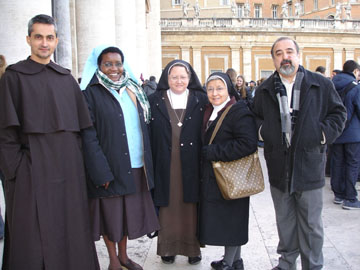 There are other authors from Touraine who are still relatively unknown,
such as Mark of the Nativity, Mauro of the Child Jesus and Dominic of St. Albert, to name
but a few. Michael Plattig, director of the Centre of Spirituality in
MŁnster, Germany, gave a resume of their contributions to Carmel through
their teachings on prayer and methods of prayer.
There are other authors from Touraine who are still relatively unknown,
such as Mark of the Nativity, Mauro of the Child Jesus and Dominic of St. Albert, to name
but a few. Michael Plattig, director of the Centre of Spirituality in
MŁnster, Germany, gave a resume of their contributions to Carmel through
their teachings on prayer and methods of prayer.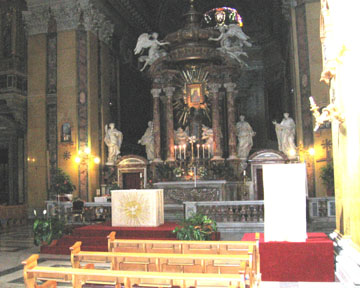
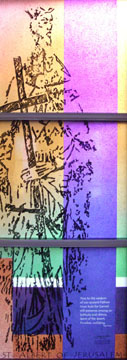
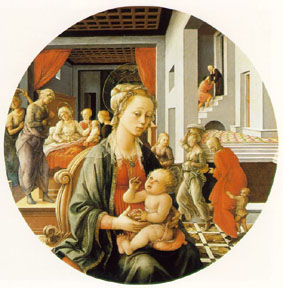 Because so many of our cultures value persons for what they can produce
or do produce, artists challenge communities of consecrated life in regard
to the prevalent mentality of economic productivity. The beautiful is
created, not produced; the beautiful takes time to imagine in a leisurely
fashion and creatively embody. Artistic time is not a vacuum to be filled
with activity but a space in which one waits patiently for vision and new
insight.
Because so many of our cultures value persons for what they can produce
or do produce, artists challenge communities of consecrated life in regard
to the prevalent mentality of economic productivity. The beautiful is
created, not produced; the beautiful takes time to imagine in a leisurely
fashion and creatively embody. Artistic time is not a vacuum to be filled
with activity but a space in which one waits patiently for vision and new
insight.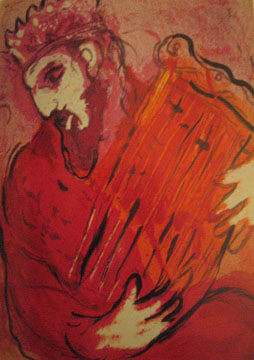 In our fractured, violent, consumerist world, the dialogue between
consecrated life and the world needs to happen in deeper ways than just
the exchange of words. Our artists give form to the contribution of
consecrated life to the new earth in music and painting and glass and
stone and words. This communication of beauty will give birth to joy and
life in the midst of violence and death. Art is most basically a paschal
statement of the passion of consecrated life for Christ and out relentless
desire to translate that God passion to our passion for all humankind.
In our fractured, violent, consumerist world, the dialogue between
consecrated life and the world needs to happen in deeper ways than just
the exchange of words. Our artists give form to the contribution of
consecrated life to the new earth in music and painting and glass and
stone and words. This communication of beauty will give birth to joy and
life in the midst of violence and death. Art is most basically a paschal
statement of the passion of consecrated life for Christ and out relentless
desire to translate that God passion to our passion for all humankind.